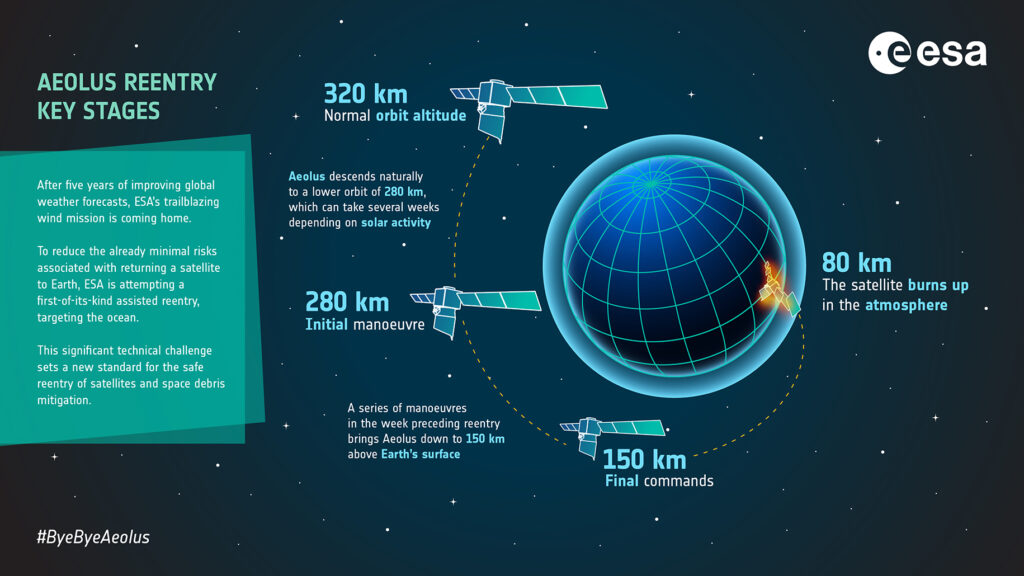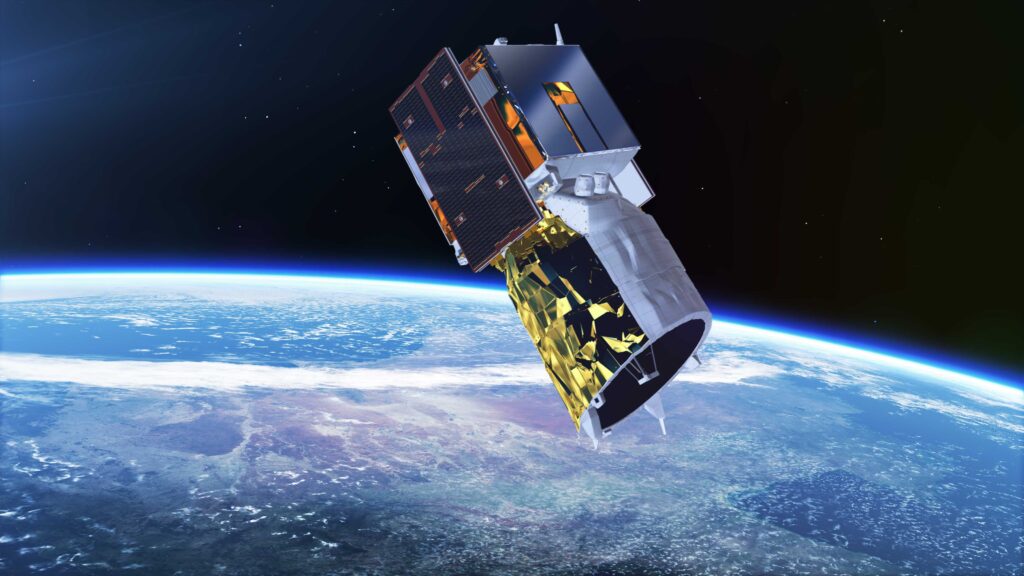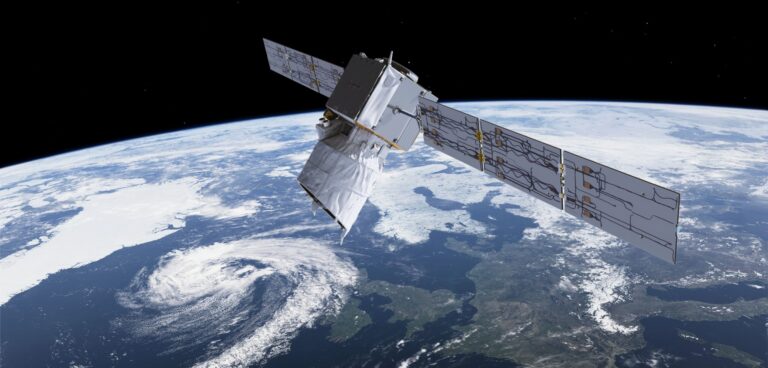The European Space Agency’s (ESA) wind mission satellite Aeolus will begin its descent to re-enter Earth’s atmosphere this weekend (July 28).
Currently orbiting 320km above Earth’s surface, it is being kept in orbit with its remaining fuel, but will soon succumb to Earth’s atmosphere and gravity.
Teams at ESA’s European Space Operations Center in Darmstadt, Germany, are busy preparing for the first-of-a-kind assisted re-entry. Analysis carried out by ESA and industry experts has demonstrated that Aeolus can re-enter through an assisted approach, in an attempt that will reduce the risk of damage from any fragments that survive the journey and reach the ground.
A series of commands and manoevers have been designed that, over a period of about a week, will passivate the spacecraft (deactivate power systems and batteries) and direct it and any remaining fragments at the sea.
If no intervention is made from the ground, Aeolus would return entirely naturally – now a common occurrence as on average one spacecraft re-enters Earth’s atmosphere per month.

Launched on August 22, 2018, Aeolus is the first satellite mission to acquire profiles of Earth’s wind on a global scale. Aeolus carries an instrument known as ALADIN, which is Europe’s most sophisticated Doppler wind lidar flown in space. A laser fires pulses of ultraviolet light toward Earth’s atmosphere, and a receiver detects the light that is scattered back from air molecules, water molecules and aerosols such as dust.
Thanks to subtle changes in the properties of the light that is received, it is possible to measure how quickly these particles travel away from Aeolus – the speed of the wind.
Aeolus data is used by weather forecasting services worldwide, including the European Centre for Medium-Range Weather Forecasts (ECMWF), Météo-France, the UK Met Office, Germany’s Deutscher Wetterdienst (DWD), and India’s National Centre for Medium Range Weather Forecasting (NCMRWF).
Its many successes, including economic benefits valued at over €3.5bn (US$3.8bn), mean that an operational follow-on mission called Aeolus-2 will be launched within a decade.




